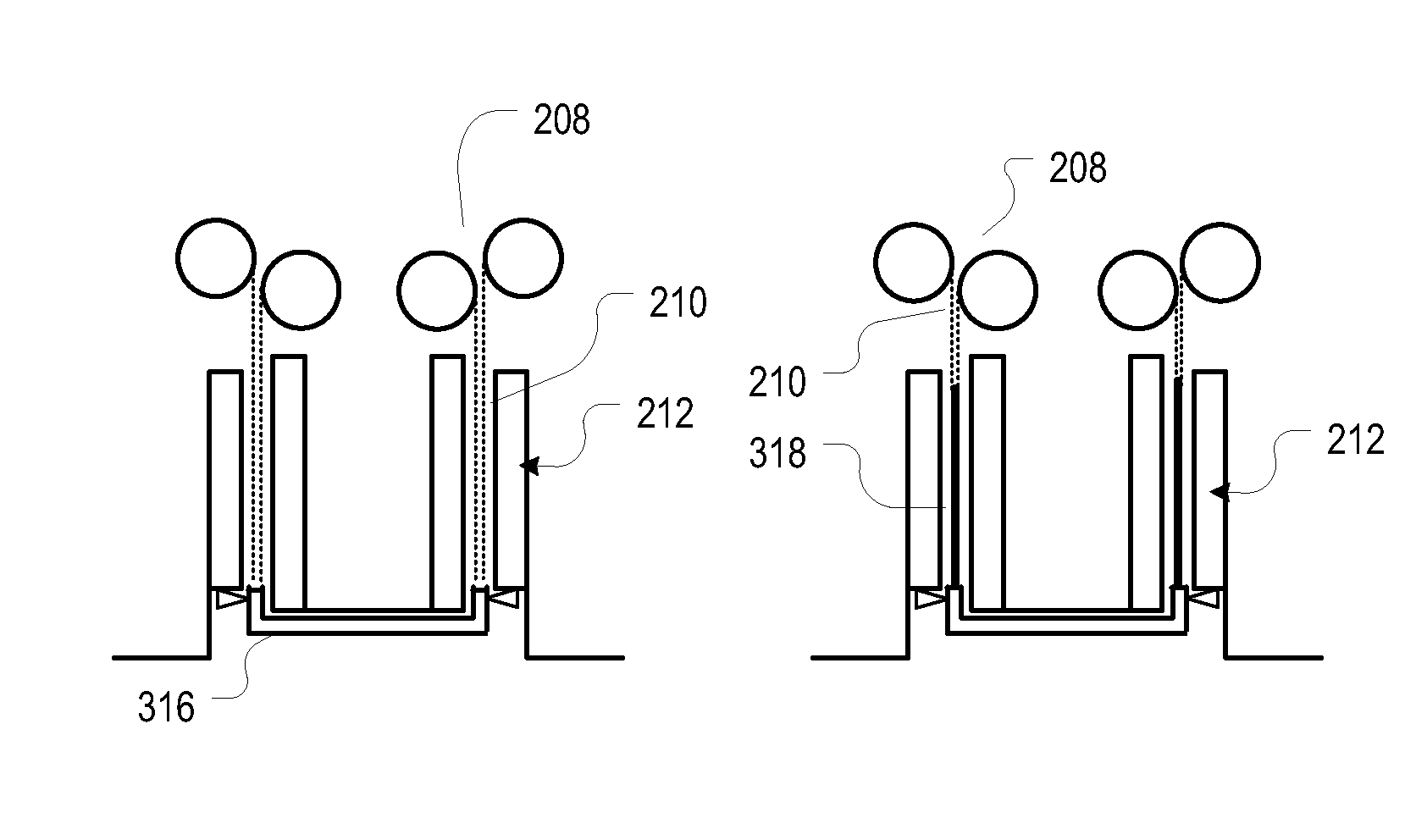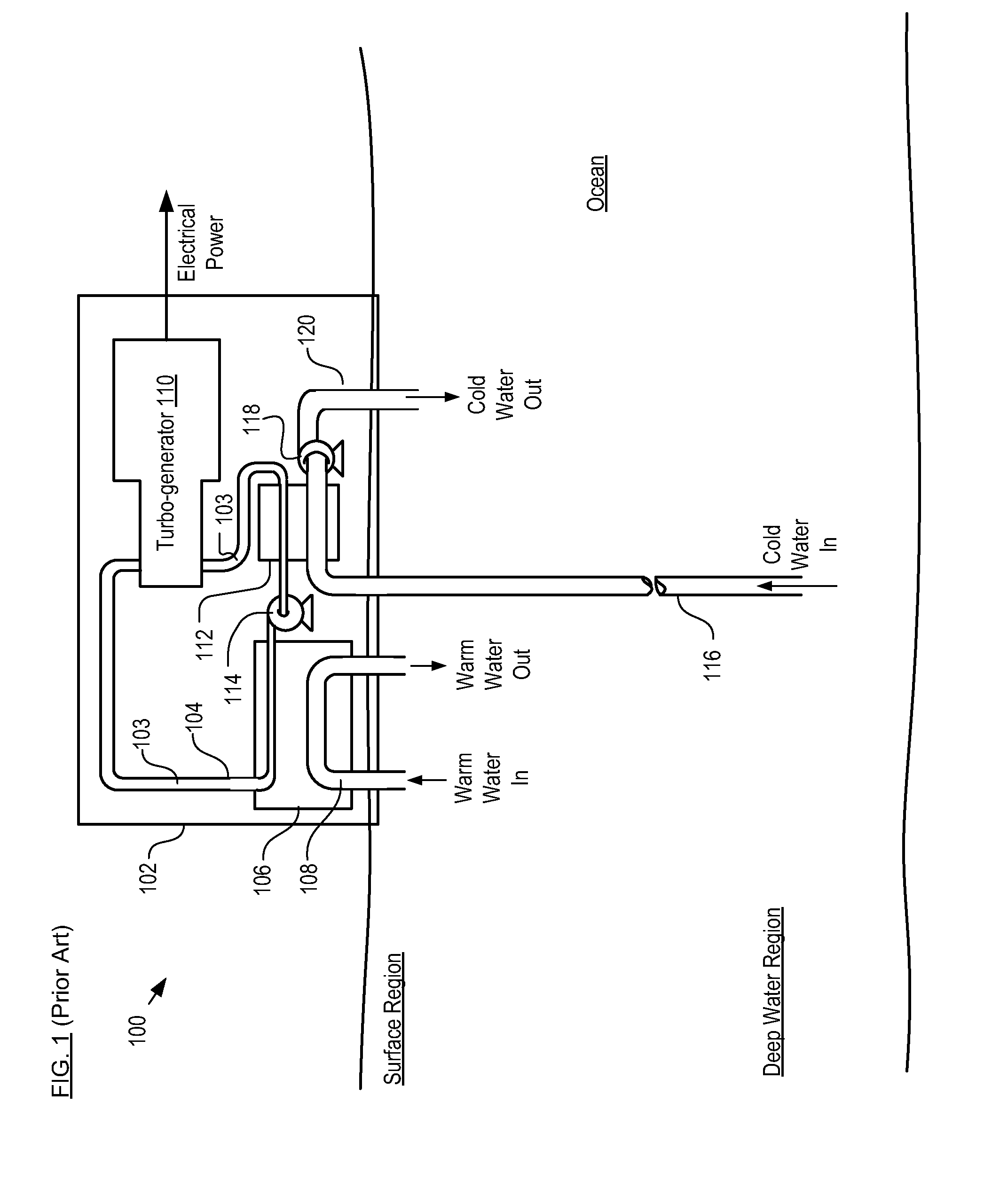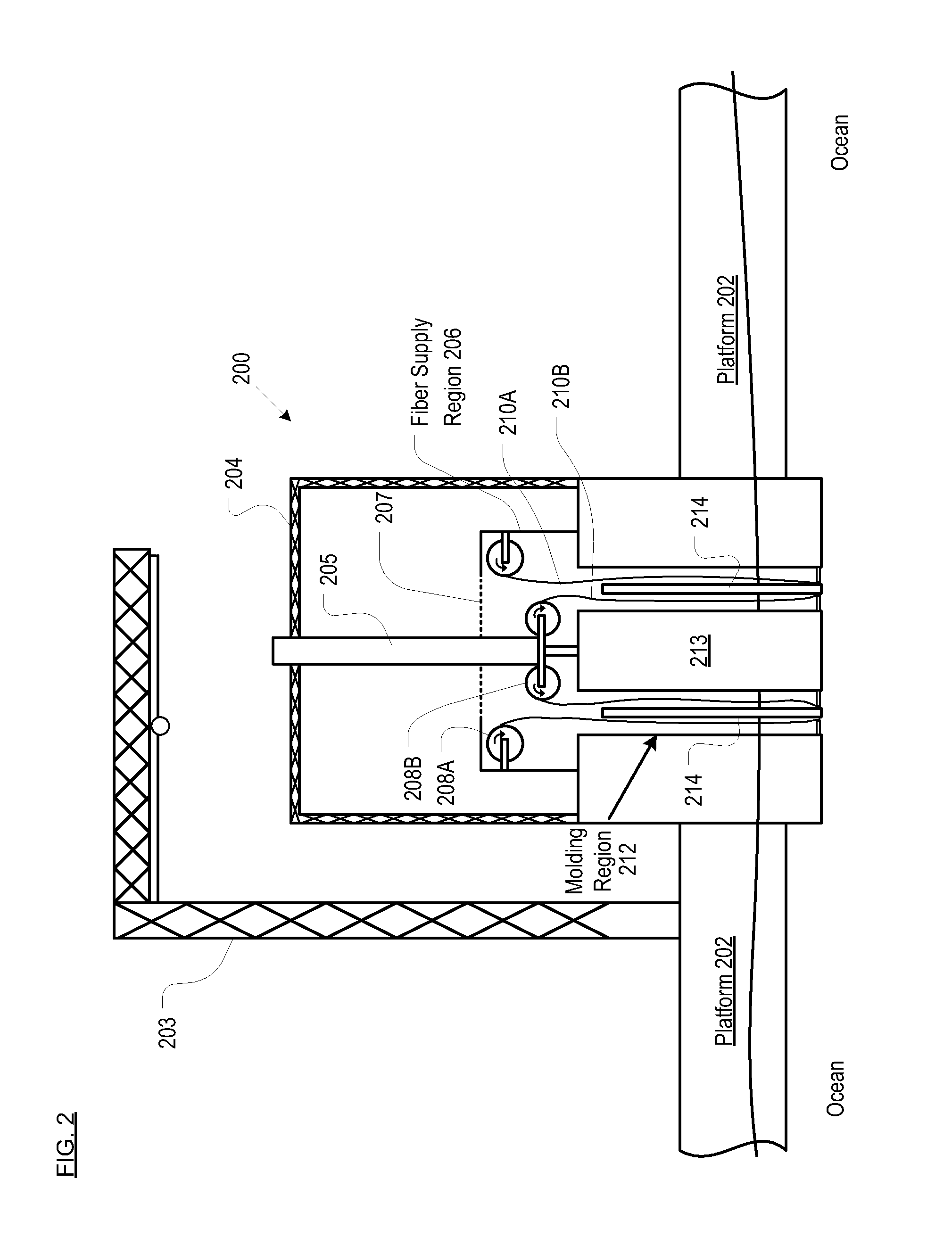Process and apparatus for molding continuous-fiber composite articles
a technology of composite articles and molding processes, applied in the direction of hollow wall articles, manufacturing tools, machines/engines, etc., can solve the problem of long pipe molded per shot, and achieve the effect of facilitating the fabrication of very long articles
- Summary
- Abstract
- Description
- Claims
- Application Information
AI Technical Summary
Benefits of technology
Problems solved by technology
Method used
Image
Examples
Embodiment Construction
[0039]Definitions. The terms appearing below are provided with the follow explicit definitions for use in this description and the appended claims.[0040]Continuous-fiber composite means a fiber composite in which fibers are continuous throughout that the composite, as opposed to being chopped or short (i.e., discontinuous).[0041]Shot refers to the amount of resin that is required to fill a mold cavity. A “multi-shot” article requires multiple, sequential resin fills and cures within the mold cavity.[0042]Workpiece means the structure that is produced or the assemblage (e.g., core, fiber, resin) that will form that structure in a single shot in the molding region. In the context of multi-shot articles, the workpiece therefore represents a portion or segment of the final composite article (e.g., a segment of the cold water pipe, etc).[0043]Continuity of fiber means that there is no discontinuity or break in fibers between the workpieces that compose a multi-shot composite article. To ...
PUM
| Property | Measurement | Unit |
|---|---|---|
| diameter | aaaaa | aaaaa |
| length | aaaaa | aaaaa |
| diameter | aaaaa | aaaaa |
Abstract
Description
Claims
Application Information
 Login to View More
Login to View More - R&D
- Intellectual Property
- Life Sciences
- Materials
- Tech Scout
- Unparalleled Data Quality
- Higher Quality Content
- 60% Fewer Hallucinations
Browse by: Latest US Patents, China's latest patents, Technical Efficacy Thesaurus, Application Domain, Technology Topic, Popular Technical Reports.
© 2025 PatSnap. All rights reserved.Legal|Privacy policy|Modern Slavery Act Transparency Statement|Sitemap|About US| Contact US: help@patsnap.com



